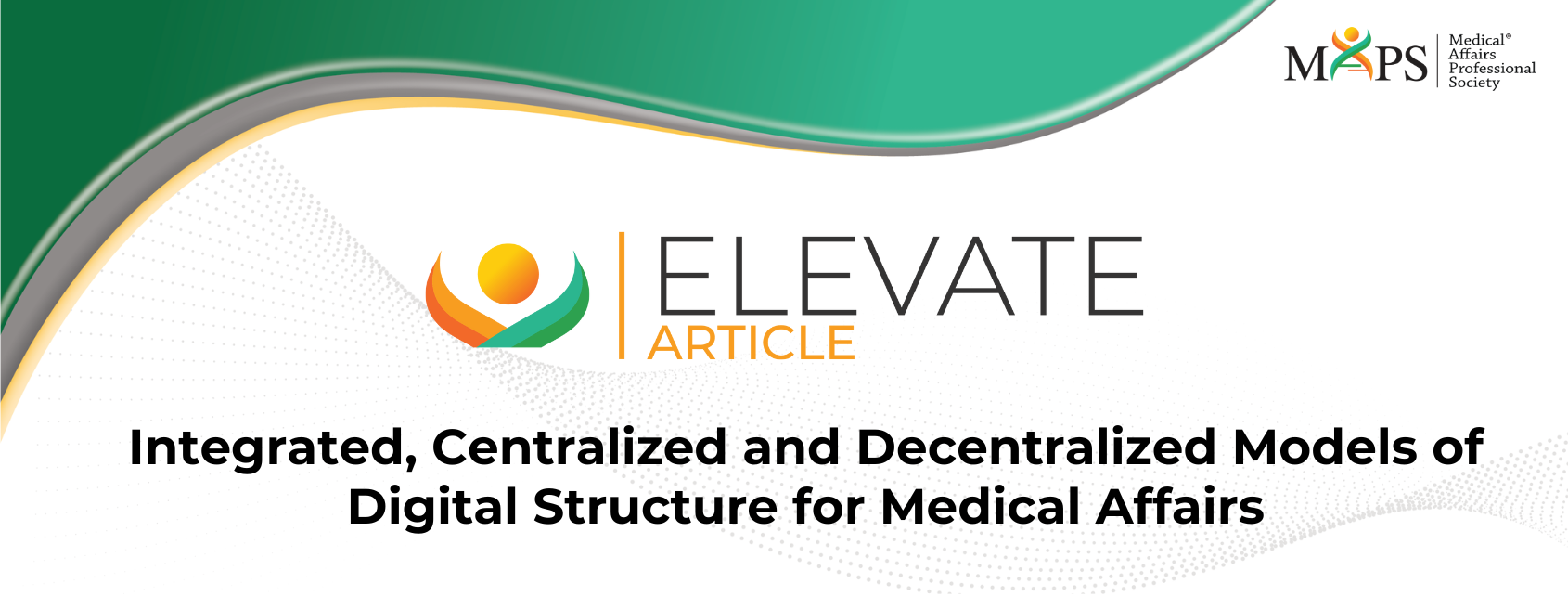
Introduction
This paper is the second in a three-part series examining digital transformation in biopharmaceutical and MedTech organizations. The first article sought to define ‘digital’ as a mindset and way of thinking that goes beyond specific platforms, tools or solutions to enable strategy and strategic thinking. The purpose of this article is to examine three models that modern industry organizations have taken to structure digital within their Medical Affairs departments. For the purpose of this article, we are defining structure as organizational hierarchy, identifying how roles and responsibilities can be organized so a company can meet its objectives.



